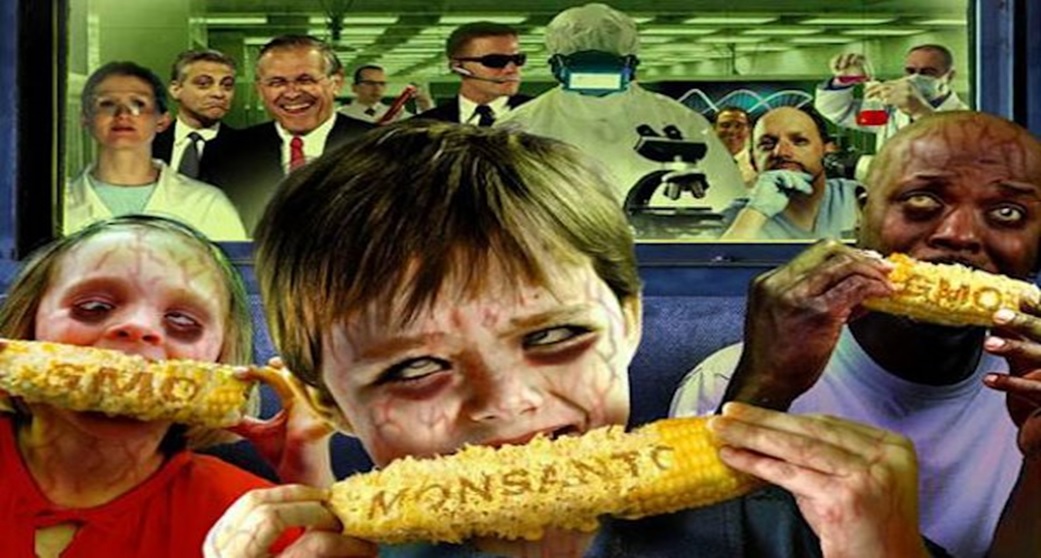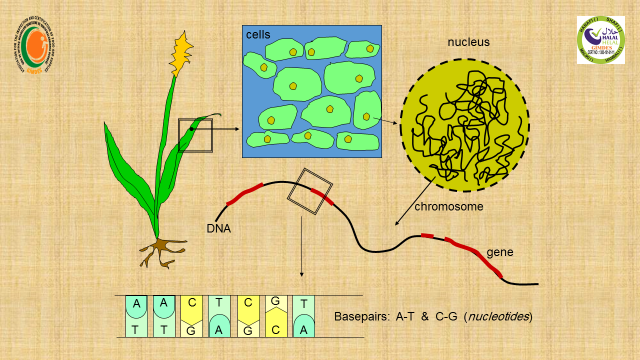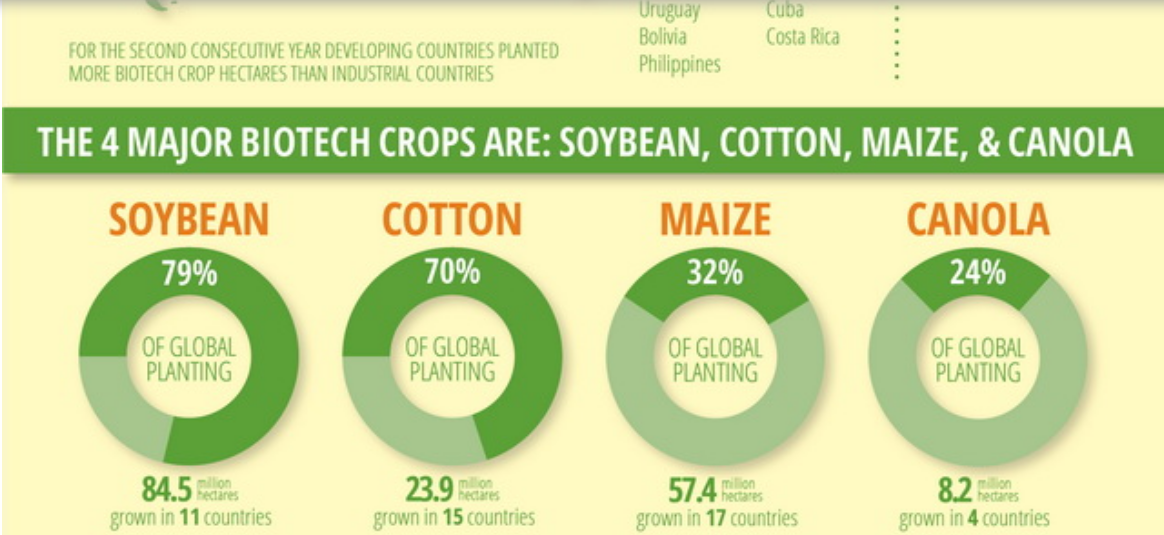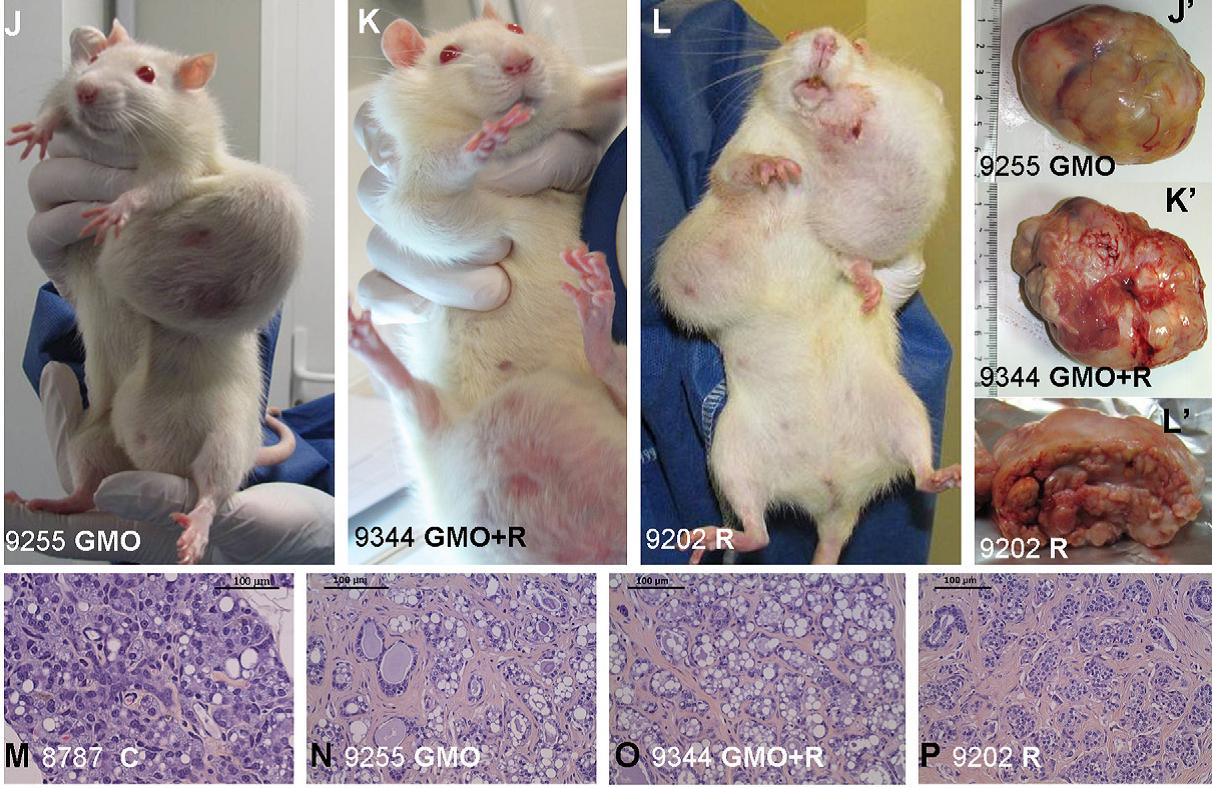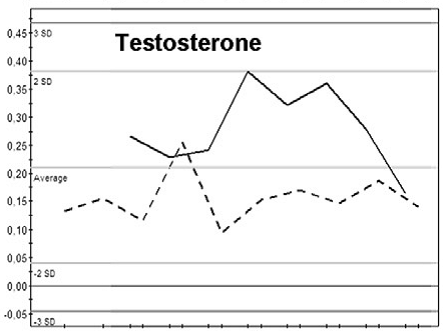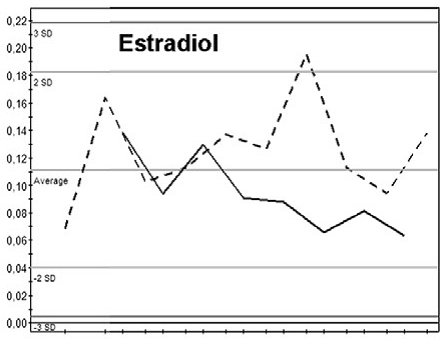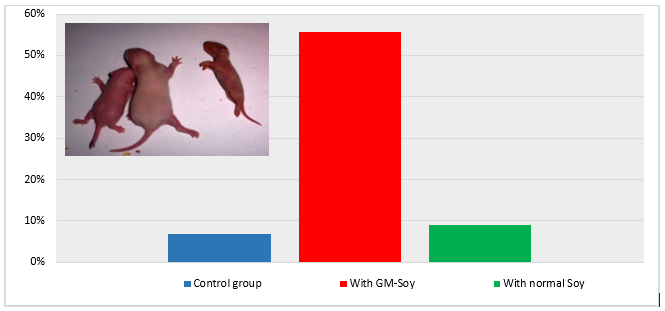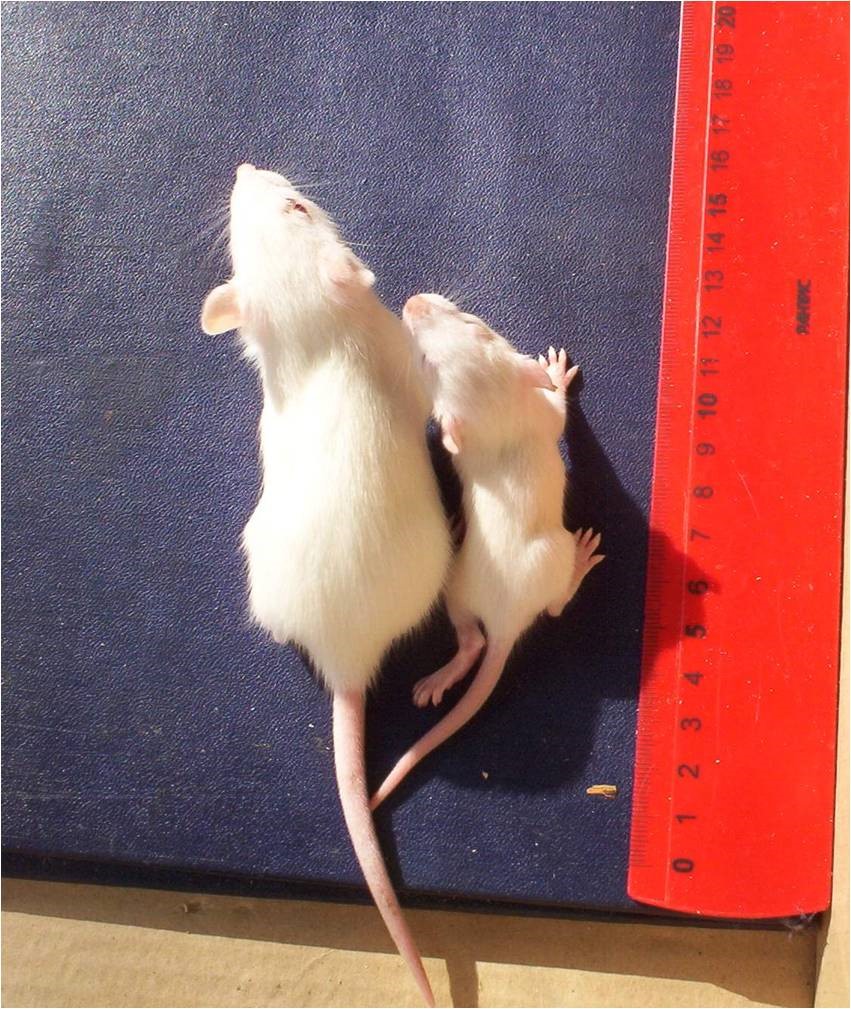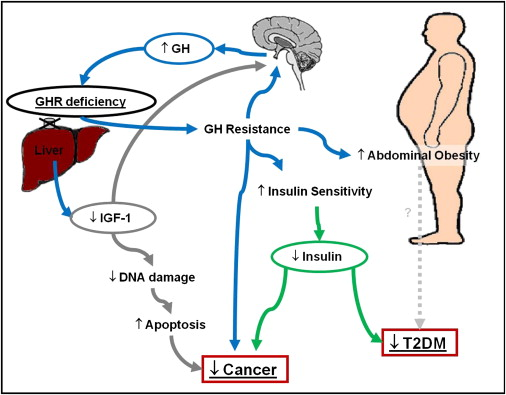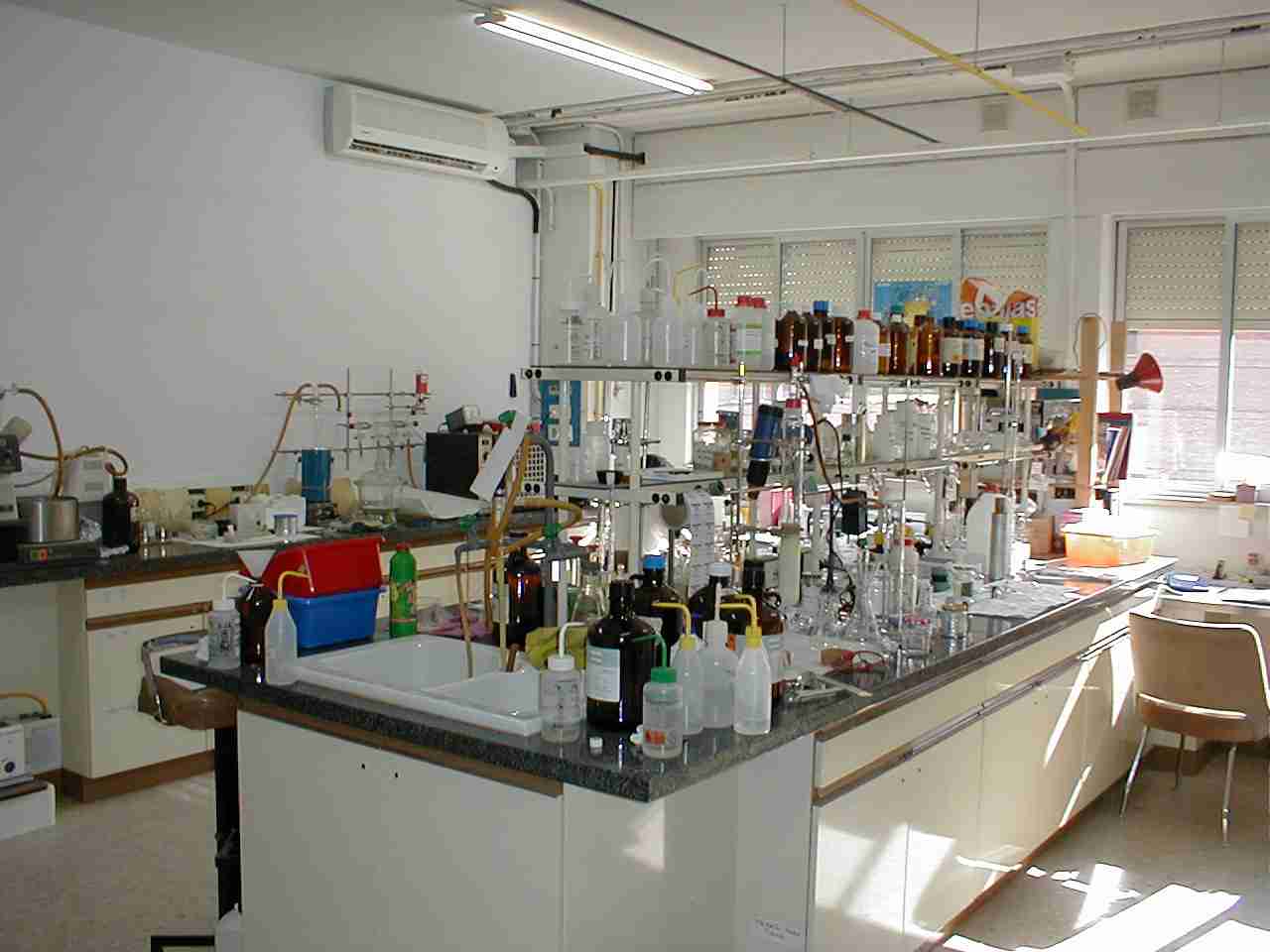“Health Risks of Genetically Modified Foods”
Can GMO products be Halal certified?
What’s a Genetically Modified Organisms
A genetically modified organism (GMO) is an organism whose genetic material has been altered using genetic engineering techniques.
These techniques, generally known as recombinant DNA technology, use DNA molecules from different sources, which are combined into one molecule to create a new set of genes. This DNA is then transferred into an organism, giving it modified or novel genes.
To understand what Genetically Modified Organisms or GMOs are, let’s first review what DNA is. Within the tissues of the plant are cells. Within the cell is the nucleus. Within that are chromosomes composed of the DNA molecule, which in turn is made up of a sequence of base pairs. A simplistic description is that sequence of the genes in the DNA determine the sequence in the RNA, which then determines the sequence of the building blocks of proteins, called amino acids. These proteins can determine a particular trait or characteristic.
How does Genetic Engineering work?
Using genetic engineering, scientists take genes from bacteria, viruses or other sources and force them into the DNA of a plant. There are 5 steps. First they isolate the gene that they want to insert and then change it so that it works in plants. They prepare plant cells to be inserted. Insertion is often done using a gene gun, where they coat tiny particles of gold or tungsten with genes and then shoot them into a plate of cells. Alternatively, they can use bacteria to infect plants with the foreign gene. Once the gene gets into the DNA of the plant cell, the cell is cloned (using tissue culture) into a full plant. All but one of these steps contain scientific uncertainties and risks for health and the environment.
Currently commercialized GM crops
The four major GMO crops are: Soy beans (79% of glo), Corn, Cotton and Canola. In addition to: Sugar Beets, Zucchini, Rice, Tomato, Potato, Alfafa, Peas, Melon etc.
| GMO crops | Planted area (million hectares) | % of global planting |
| Soy beans | 84.5 | 79 |
| Cotton | 23.9 | 70 |
| Corn | 57.4 | 32 |
| Canola | 8.2 | 24 |
Biotech crop hectares increased by more than 100-fold from 1.7 million hectares in 1996, to over 175 million hectares in 2013. In 2013. 1.5 billion hectares of all crops were planted worlwide
GMO crops benefits
Pest resistance
Herbicide tolerance
Disease resistance
Cold tolerance
Drought tolerance
salinity tolerance
Why GM crops are on the market
“The agency is not aware of any information showing that foods derived by these new methods differ from other foods in any meaningful or uniform way.” This sentence in the 1992 FDA policy, which still stands today, is the reason why GM crops are on the market. On the basis of this statement, the FDA said no safety testing was necessary. If Monsanto or the other biotech food companies say their foods are safe, the FDA has no further questions.
Who is Michael Taylor
The man in charge of FDA policy, Michael Taylor. He was Monsanto’s former attorney, and later their vice-president. The White House under George H. W. Bush had instructed the FDA to promote the biotechnology industry, and so the FDA created a new position for Michael Taylor. As a result of the policy that he oversaw, if Monsanto and others want to put a GM crop on the market, they don’t even have to tell the FDA. GM companies do participate in a voluntary and highly superficial consultation process with the FDA, in which they offer just summary data and their own conclusions of safety. The Obama administration has re-installed Taylor at the FDA.
Health Risk of Genetically Modified Food
- Health risk of GMO maize
Seralini et al. 2012 studied the Long term toxicity of a Roundup herbicide and a Roundup-tolerant genetically modified maize on rats
They took 100 male +100 female rats divded into 10 groups and fed with different concentrations of GMO maize of (GM NK603 maize) producced by Mosanto
Results:
Mortality: In females, all treatment groups showed a 2-3 fold increase in mortality, and deaths were earlier.
Effects on kidney: marked and severe chronic progressive nephropathies, were about 2-fold higher in treatments.
“Biochemical analyses confirmed very significant chronic kidney deficiencies and,, for all treatments and both sexes; 76% of the altered parameters were kidney-related.
Effects on liver: In treated males, liver congestions and necrosis were 2.5 to 5.5 times higher. Marked and severe nephropathies were also generally 1.3 to 2.3 times greater.
TUMORS
Females developed large mammary tumors more frequently and before controls; Males presented 4 times more large palpable tumors than controls.
24th month, 50–80% of female animals had developed tumors in all treated groups, with up to 3 tumors per animal,
HORMONAL BALANCE
Sex hormonal balance was modified by consumption of GM maize and Roundup treatments.
Estradiol is a human sex hormone and steroid, and the primary female sex hormone
Estradiol has been tied to the development and progression of cancers such as breast cancer, ovarian cancer and endometrial cancer.
- Health risk of GMO soy
A study conducted by a scientist from the Russian National Academy of Sciences. She fed female rats GM soy, starting two weeks before they conceived, and continuing through pregnancy and lactation.
Mortality of offspring
More than 50% of the offspring whose mothers feed on GM soy died within 3 weeks.
Growth rate
Among the differences was a dramatic reduction in average weight. Here’s an example: The mother of the smaller rat ate GM soy.
Liver and testicles
Rats fed GM soy showed changed color in their liver and testicles, as well as changes in the cell structures.
Effects of injected recombinant bovine growth hormone (RBGH) in animals
What is RBGH?
RBGH (recombinant Bovine Growth Hormone) is a genetically engineered variant of the natural growth hormone produced by cows. Manufactured by Monsanto, it is sold to dairy farmers under the trade name Posilac.
The consumption of milk from cows injected rbGH leads to an increase in IGF-I in humans, since IGF-1 survives digestion (Xian et al., 1995).
The increased levels of IGF-I in humans predict increased rates in colon, breast, and prostate cancer
GMOs from Islam point View
Islam accepts and allows the use of all science and innovations for the benefit of mankind as long as they achieved the benefits and don’t lead to harm and damages.
Allah Ta’ala ordered humankind to eat Halal and Tayyib
يَا أَيُّهَا النَّاسُ كُلُوا مِمَّا فِي الْأَرْضِ حَلَالًا طَيِّبًا وَلَا تَتَّبِعُوا خُطُوَاتِ الشَّيْطَانِ ۚ إِنَّهُ لَكُمْ عَدُوٌّ مُّبِينٌ
O mankind, eat from whatever is on earth [that is] lawful and good and do not follow the footsteps of Satan. Indeed, he is to you a clear enemy
But some people follow Satan steps go away to destroy crops and animals
وَإِذَا تَوَلَّىٰ سَعَىٰ فِي الْأَرْضِ لِيُفْسِدَ فِيهَا وَيُهْلِكَ الْحَرْثَ وَالنَّسْلَ ۗ وَاللَّـهُ لَا يُحِبُّ الْفَسَادَ
And when he goes away, he strives throughout the land to cause corruption therein and destroy crops and animals. And Allah does not like corruption.
وَلَأُضِلَّنَّهُمْ وَلَأُمَنِّيَنَّهُمْ وَلَآمُرَنَّهُمْ فَلَيُبَتِّكُنَّ آذَانَ الْأَنْعَامِ وَلَآمُرَنَّهُمْ فَلَيُغَيِّرُنَّ خَلْقَ اللَّـهِ ۚ وَمَن يَتَّخِذِ الشَّيْطَانَ وَلِيًّا مِّن دُونِ اللَّـهِ فَقَدْ خَسِرَ خُسْرَانًا مُّبِينًا
And I will mislead them, and I will arouse in them [sinful] desires, and I will command them so they will slit the ears of cattle, and I will command them so they will change the creation of Allah .” And whoever takes Satan as an ally instead of Allah has certainly sustained a clear loss.
Because of these bad deeds corruption has appeared
ظَهَرَ الْفَسَادُ فِي الْبَرِّ وَالْبَحْرِ بِمَا كَسَبَتْ أَيْدِي النَّاسِ لِيُذِيقَهُم بَعْضَ الَّذِي عَمِلُوا لَعَلَّهُمْ يَرْجِعُونَ
Corruption has appeared throughout the land and sea by [reason of] what the hands of people have earned so He may let them taste part of [the consequence of] what they have done that perhaps they will return [to righteousness].
To judge on GMOs, it is necessary compare between the desired benefits and harm caused on the base:
” Avoiding evil has priority over bringing benefits”
And according to the previous presented scientific researchs which confirmed that GMOs may cause many known and unknown harmful effect to humankind
and on the base of:
“ Don’t cause harm to yourself nor to others”
GMOs can not be in a harmony with Halal and Tayyib concepts, and Muslims (as Halal certifiers or consumers) have to say NO for GMO.
References
Gilles-Eric Séralini, Emilie Clair, Robin Mesnage, Steeve Gress, Nicolas Defarge, Manuela Malatesta, Didier Hennequin, Joël Spiroux de Vendômois. 2012. Long term toxicity of a Roundup herbicide and a Roundup-tolerant genetically modified maize. Food and Chemical Toxicology 50, 4221–4231
Hammond, B.G., Dudek, R., Lemen, J.K., Nemeth, M.A., 2006b. Results of a 90 day safety assurance study with rats fed grain from corn borer-protected corn. Food Chem. Toxicol. 44, 1092–1099.
Snell, C., Bernheim, A., Bergé, J.-B., Kuntz, M., Pascal, G., Paris, A., Ricroch, A.E., 2011. Assessment of the health impact of GM plant diets in long-term and multigenerational animal feeding trials: a literature review. Food Chem. Toxicol. 50, 1134–1148.
Malatesta, M., Boraldi, F., Annovi, G., Baldelli, B., Battistelli, S., Biggiogera, M., Quaglino, D., 2008. A long-term study on female mice fed on a genetically modified soybean: effects on liver ageing. Histochem. Cell Biol. 130, 967–977.
ARTEMIS DONA and IOANNIS S. ARVANITOYANNIS (2009). Health Risks of Genetically Modified Foods. Critical Reviews in Food Science and Nutrition, 49:164–175
W B Ewen and Arpad Pusztai 1999. Effect of diets containing genetically modified potatoes expressing Galanthus nivalis lectin on rat small intestine Stanley. THE LANCET Vol 354 -16,
Trish Malarkey (2003). Human health concerns with GM crops. Mutation Research, 544 217–221
R. Dohoo, L. DesCôteaux, K. Leslie, A. Fredeen, W. Shewfelt, A. Preston, and P. Dowling. (2003). A meta-analysis review of the effects of recombinant bovine somatotropin 2. Effects on animal health, reproductive performance, and culling. Can J Vet Res. 67(4): 252–264.
Ultrastructural analysis of testes from mice fed on genetically modified soybean. 2004. Vecchio, B. Cisterna, M. Malatesta, T.E. Martin, M. Biggiogera. European Journal of Histochemistry


